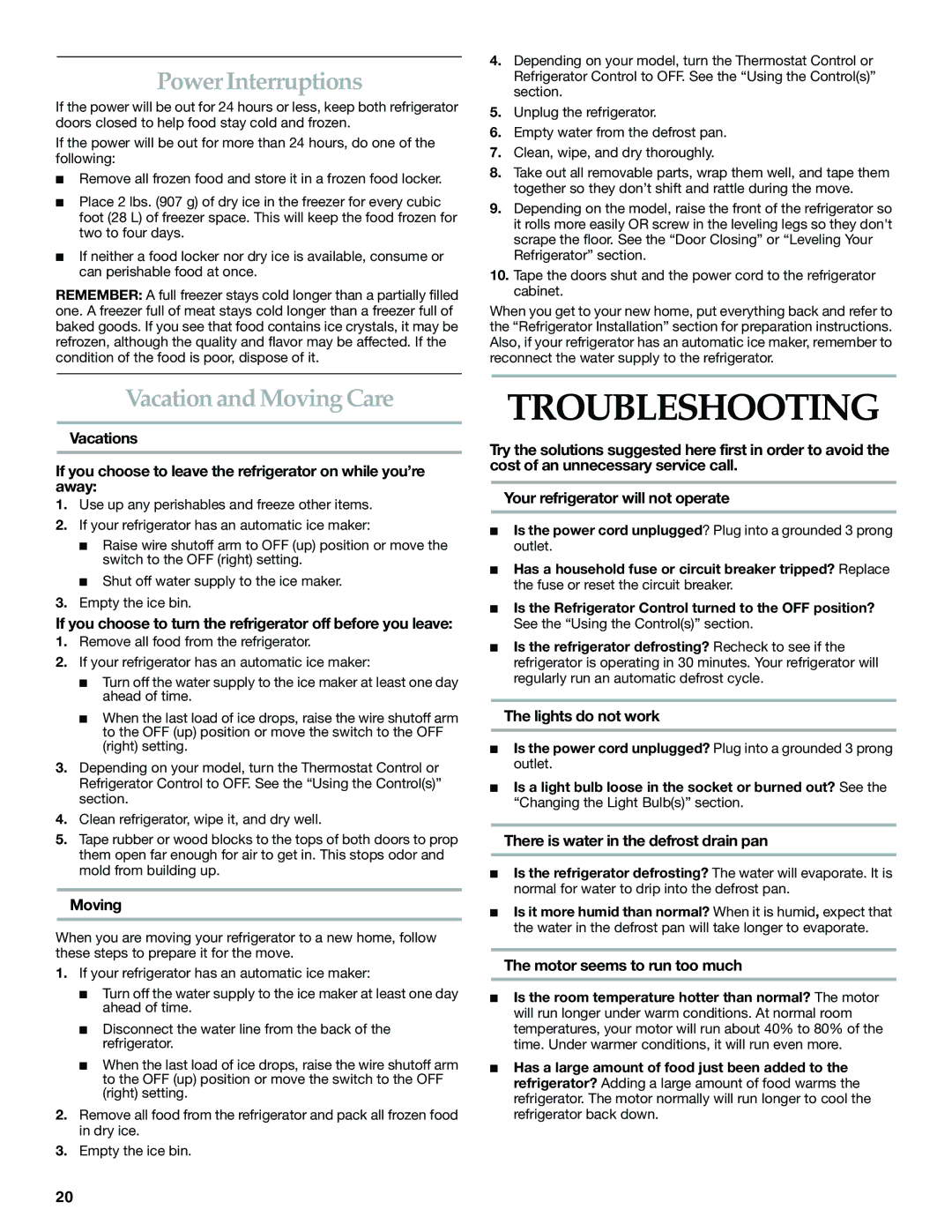KBRA20ELBL0, KBRA20EMSS, KBLA20ELSS0, KBRA20ELSS0, KBRA20ELWH0 specifications
The KitchenAid KBRA20ELBT0, along with its variants KBRA20ELWH0, KBRA20ELSS0, and KBLA20ELSS0, represents the epitome of modern refrigeration technology in bottom-mount refrigerator design. Combining style, functionality, and innovative features, these models are designed to meet the demands of contemporary kitchens while preserving food freshness and accessibility.One of the standout features is the spacious interior layout which maximizes storage capacity. The bottom-mount design places the refrigerator section at eye level, allowing for easy access to frequently used items while the freezer section is located beneath. This configuration minimizes bending and stretching, thus enhancing convenience in day-to-day use.
Equipped with the Advanced Cooling System, the KBRA20EL series maintains optimal temperature and humidity levels. The system utilizes a combination of precise cooling technology and active temperature management to ensure that food stays fresher for longer. This technology monitors conditions within the refrigerator to minimize temperature fluctuations, which is critical for preserving perishables.
The installation of the FreshChill Temperature Management System further enhances usability by allowing users to customize the temperature settings for different compartments. Additionally, the Produce Preserver feature helps to extend the life of fruits and vegetables by absorbing ethylene gas, which can hasten spoilage.
These models feature a sleek, stainless steel exterior that not only enhances aesthetic appeal but also provides ease of cleaning. The fingerprint-resistant finish ensures that the surface remains smudge-free, which is particularly important in high-traffic kitchens.
Another valuable characteristic is the LED lighting embedded within the refrigerator compartments. This energy-efficient lighting provides bright and clear visibility, making it easy to locate items even in the back of the shelves.
Additionally, the KBRA20EL series includes multiple adjustable shelves and door bins, allowing for flexible storage solutions. The clear shelves make it easy to spot items, reducing the likelihood of food items being lost in the back of the fridge.
In essence, KitchenAid’s KBRA20ELBT0 and its counterparts showcase a sophisticated blend of advanced technology, user-friendly design, and increased storage capabilities. These bottom-mount refrigerators are an ideal choice for homeowners looking to elevate their kitchen experience while ensuring their food stays fresh and accessible. Whether it's the stylish finishes, innovative cooling technology, or versatile storage options, this series is crafted to meet the modern kitchen's needs and demands.

